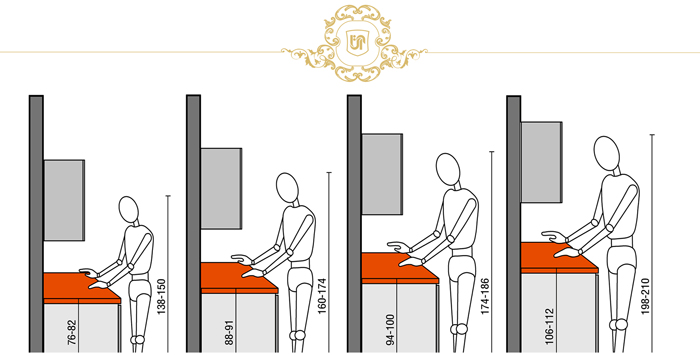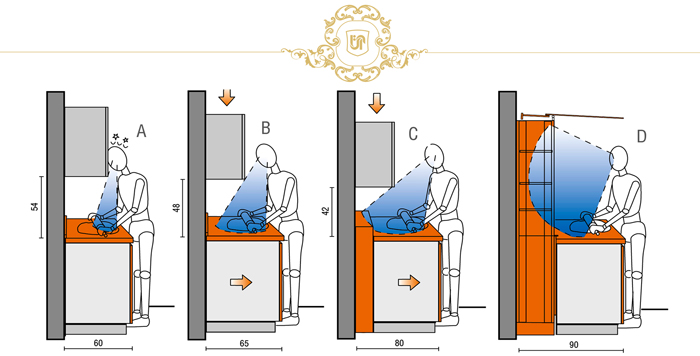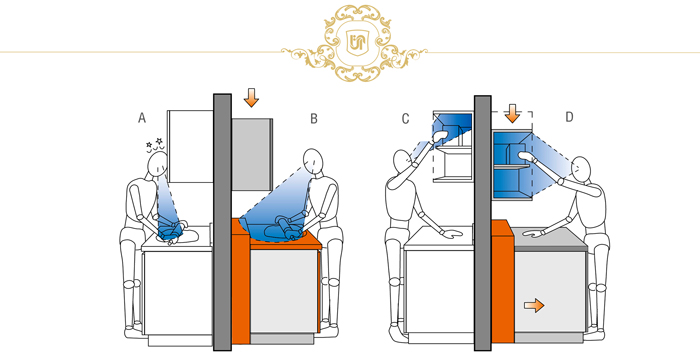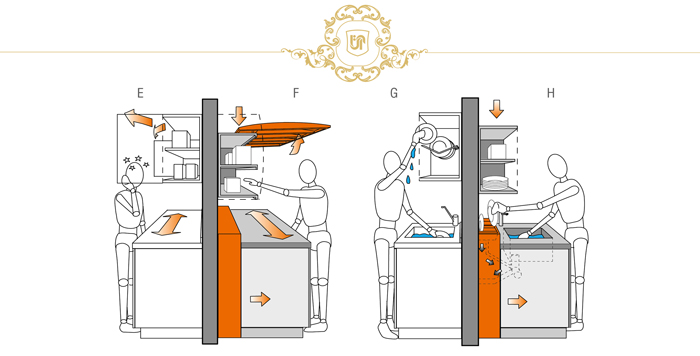Preparation of food, washing of vegetables, fruits and dishes causes housewives to spend long hours in kitchens. This long presence and use of work table and tools that are not properly designed gradually leads to skeletal disorders and damage to the muscles and joints. Experts believe that with sufficient care and attention to ergonomic principles, these side effects can be prevented. By selecting and designing of the kitchen ware and simple changes, less risky and more comfortable work conditions can be provided. Designing a kitchen according to ergonomics enables the kitchen accessories and cabinets to be proportionally designed according to the activity level and height of the individual, meaning that best body postures can be maintained.
In this area, the technical team of Atra propose the height of the work table according to the individual’s height.
60 cm is the conventional depth for floor cabinets. The technical team of Atra provide the depths of 65 and 80 cm. by increasing the depth of floor cabinets, the distance to wall cabinets can be reduced, leading to a more ergonomic position.
A. In the classic design with a depth of 60 cm for the floor cabinet, the recommended height to the wall panel is 54 cm, required for adequate visibility from the work table. This height is problematic for using and viewing the contents of wall cabinet.


E. Wall cabinets with conventional doors and openings limited free movements, imposing the hazard of impact with the head.
F. Doors opened upwards are ideal, allowing them to stay open for as long as desired without the risk of damage to the user’s head.
G. In conventional system, the dish rack is mounted on the wall cabinet. This makes the act of raising and placing the dishes quite cumbersome. Also the water has no determined drainage path, drippling into the sink and possible wetting the user’s clothes.
H. When floor cabinet is built with a depth of 80 cm, placement of the dish rack behind the sink becomes possible, which makes drying the dishes much less energy consuming, while allowing the water to be directly drained via dedicated plumbing.